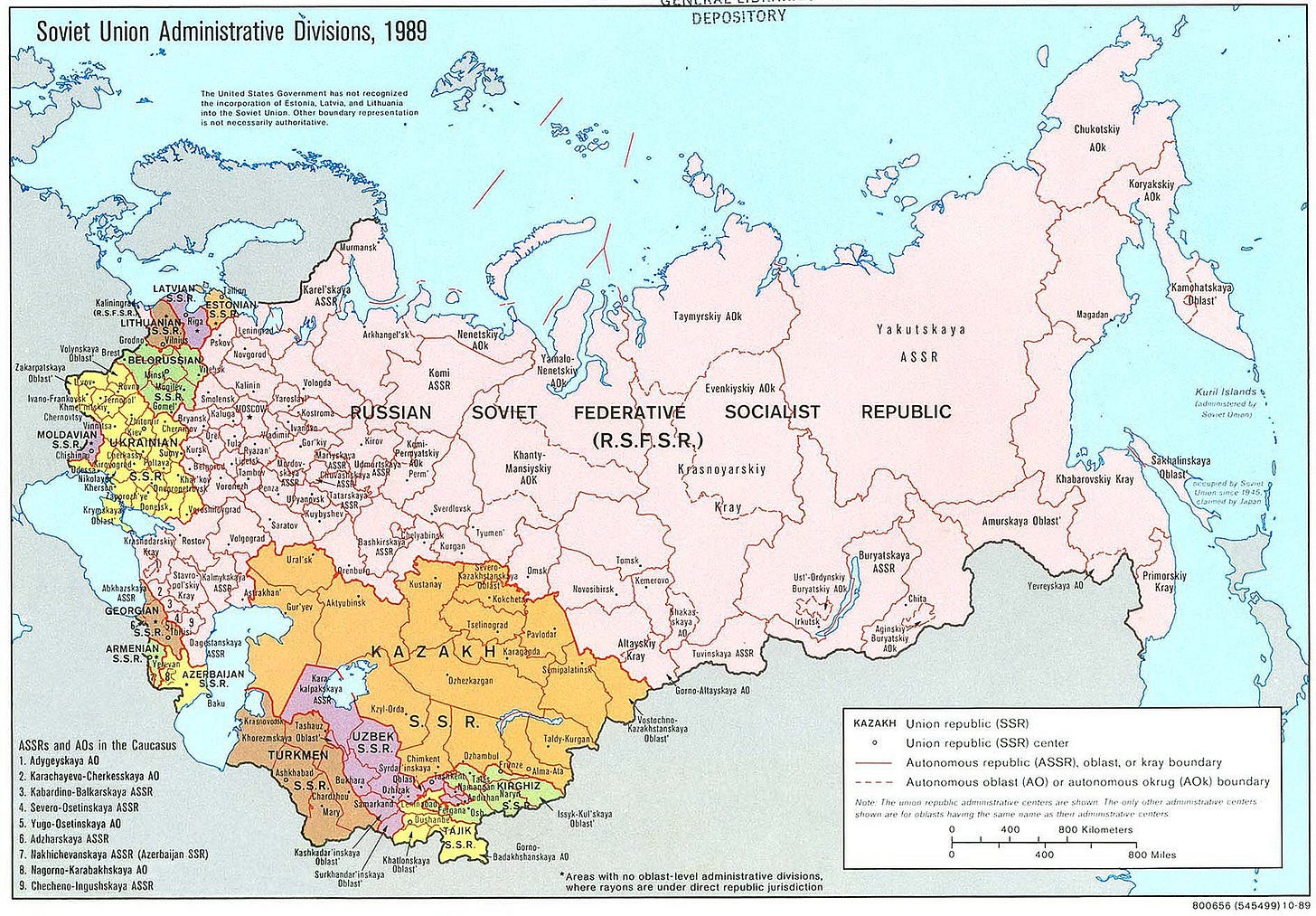To understand the mechanics of Soviet collapse you must first understand how the USSR was organised. To start with, the Soviet Union was a multi-level federation. On the highest level, the USSR consisted of the 15 Union Republics.
Union Republics: Russia, Ukraine, Belarus, Moldova, Georgia, Armenia, Azerbaijan, Kazakhstan, Turkmenistan, Uzbekistan, Kyrgyzstan, Tadjikistan
Union Republics were the highest level, highest status, and highest autonomy administrative entities in the country. Each Union Republic was seen as a cradle of national culture, language and self-consciousness. Each had its own organs of power, including, most importantly, the republican Communist Party led by the republican Central Committee. Obviously, they were subject to the central authorities in Moscow. Yet, Moscow ruled through them, rather than directly.
This all may sound way too abstract, so let me use an analogy. When you think of the Soviet Union, think of Krang.
Krang may look unimpressive. His body is weak. Yet, he is more dangerous than he seems. To project power, he uses a mighty android. A mindless robot, whose sole purpose is to execute the will of Krang.
Now Krang is the Communist Party.
And the robot is the Soviet state.
The most important thing to understand about the USSR is that in the USSR, the Party was in charge. And when I say “the Party” I mean first and foremost the Central Committee. The Central Committee was the dictatorial organ of power. All other institutions including the government, the ministries, the army, the police, the KGB were its instruments. The robots. The tools. They served to execute the orders of Krang.
Now how did that work in a federative state?
Well, in a federative state, the Krang was fractal
Keep reading with a 7-day free trial
Subscribe to kamilkazani to keep reading this post and get 7 days of free access to the full post archives.




